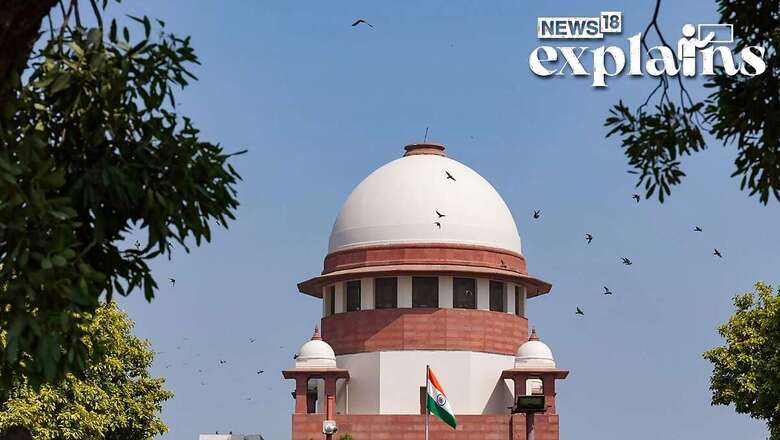
views
Former Chief Justice of India Ranjan Gogoi, a nominated member in Rajya Sabha, said on Monday (August 7) that the basic structure of the Constitution has a “very debatable jurisprudential basis." Gogoi, who was nominated to the Parliament’s upper house in March 2020, made the remarks on the basic structure doctrine during his maiden speech where he voiced his support to the Government of National Capital Territory of Delhi (Amendment) Bill.
The remark has caused an uproar with a Congress leader expressing his shock over the comment. Congress general secretary KC Venugopal wondered whether it was a ruling BJP’s trick to begin the “full-fledged dismantling" of the Constitution.
The debate over the basic structure is a long one and addresses a fundamental question- does Parliament have unlimited power to amend the Constitution or is it subject to limitations?
The concept of ‘basic structure’ came into existence in the landmark judgment in Kesavananda Bharati vs State of Kerala case in 1973.
What is Kesavananda Bharati Case?
In Kesavananda Bharati case, the petitioners sought relief against the Kerala government vis-à-vis two state land reform laws, which imposed restrictions on the management of religious property. The case was challenged under Article 26 of the Fundamental Laws, concerning the right to manage religiously owned property without government interference.
The Supreme Court convened the largest-ever bench of 13 judges and addressed the fundamental question- Was Parliament’s power to amend the Constitution limitless?
The Kesavananda Bharati judgment ruled that the Parliament cannot use its constituent power to alter the basic structure of the Constitution of India. It held that the “basic structure of the Indian Constitution could not be abrogated even through a constitutional amendment. The Parliament said cannot cease to be a creature of the Constitution and become its master.
“A Constitution is a living system. But just as in a living, organic system, such as the human body, (where) various organs develop and decay, yet the basic structure or pattern remains the same with each of the organs having its proper function, so also in a Constitutional system the basic institutional pattern remains even though the different component parts may undergo significant alterations. For it is the characteristic of a system that it perishes when one of its essential component parts is destroyed," the Supreme Court stated in the 703-page Kesavananda Bharati verdict on April 24, 1973.
Several other cases including the Indira Gandhi vs Raj Narain case (1975), Minerva Mills Case (1980) and Waman Rao Case (1981) strengthened and reiterated the basic structure of the constitution.
Basic Structure of the Constitution
The Article 368 grants the power to the Parliament to amend laws whenever necessary and lays down the procedure in detail. As a result, after the Constitution was adopted in 1950, several crucial fundamental rights like the rights to property and free speech and expression were heavily diluted in the First Amendment.
The term basic structure doctrine was coined in 1973 and it is one of the fundamental judicial principles to ensure that the power of amendment is not misused by Parliament. Though the basic structure doctrine is not defined in the Constitution, it holds that there is a basic structure to the Indian Constitution and the Parliament cannot amend it.
In other words, the Parliaments cannot amend the laws which govern the rules of the Parliament and the principles feature of the Constitution.
As per the Supreme Court, the basic structure constitutes the following elements:
- The supremacy of the Constitution
- Republican and Democratic forms of Government
- Secular character of the Constitution
- Separation of powers between the legislature, executive and the JudiciaryFederal structure
Is the Debate on the Basic Structure New?
There have been several debates before and after the Kesavananda Bharati judgment over the basic structure doctrine and what constitutes it.
Earlier in January this year, Vice President Jagdeep Dhankhar questioned the landmark verdict saying it set a bad precedent and if any authority questions Parliament’s power to amend the Constitution, it would be difficult to say “we are a democratic nation". Dhankhar said he does not subscribe to the Kesavananda Bharati case ruling that Parliament can amend the Constitution but not its basic structure.
Chief Justice of India DY Chandrachud in response compared the ‘basic structure’ of the Constitution to the North Star, an unfailing guide which shows the way when the path appears convoluted.




















Comments
0 comment